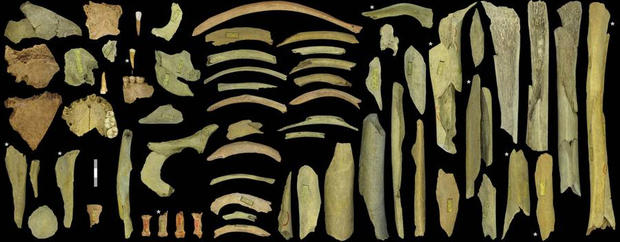Neanderthal bones show signs of cannibalism
Archaeologists excavating the Goyet caves in Belgium have unearthed a shocking find -- the first evidence of Neanderthal cannibalism in northern Europe.
The remains that were found were radiocarbon-dated to be about 40,500 to 45,500 years old, and it was determined that Neanderthals butchered and used the bones of their peers as tools, according to a press release from the Eberhard Karls University of Tübingen. The findings were published in the journal Scientific Reports.
The team identified 99 "uncertain" bone fragments as belonging to Neanderthals, which would make this the greatest trove of Neanderthal remains ever found north of the Alps.
The findings also shed light on the genetics of this lost human species, adding to previously collected data on Neanderthal genes.
Where does the cannibalism come into play? The researchers said that markings like cuts and notches on the bone fragments indicated that the bodies had been butchered by human hands. These bodies were skinned and cut up, with the bone marrow removed, the researchers said.
"These indications allow us to assume that Neanderthals practiced cannibalism," said Hervé Bocherens, one of the lead researchers from Tübingen's Senckenberg Center for Human Evolution and Palaeoenvironment.
It is unclear whether the killings were part of some sort of ceremonial ritual. Bocherens noted that the remains of horses and reindeer in Goyet were also butchered in the same way.
While this is the first evidence of Neanderthal cannibalistic behavior in northern Europe, past researchers have found signs of ancient cannibalism at El Sidrón and Zafarraya in Spain as well as at the French sites Moula-Guercy and Les Pradelles.
The researchers say it appears the human remains were used in the same way as other animals. One thigh bone and three shinbones were used to help shape stone tools used by the Neanderthal community at the site, they said.
The researchers said that the findings open up new windows of understanding into how this ancient species actually lived and interacted.
"The big differences in the behavior of these people on the one hand, and the close genetic relationship between late European Neanderthals on the other, raise many questions about the social lives and exchange between various groups," Bocherens said.
Neanderthals died out about 30,000 years ago, but before that some mated with early homo sapiens, leaving their traces in the DNA of many people living today.


